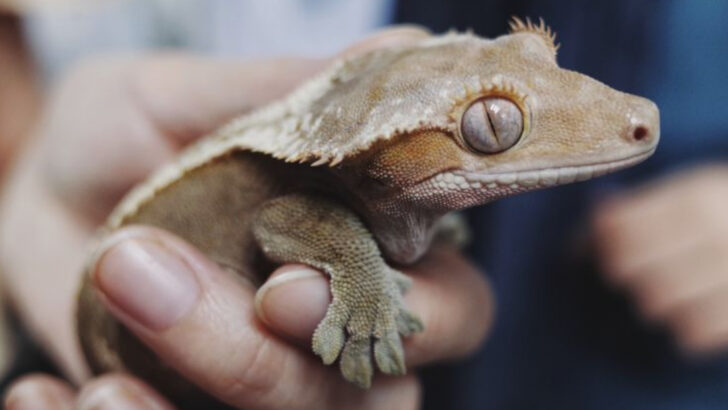That “harmless” lizard in your yard might pack a venomous punch.
Reptiles aren’t all tongue-flicking, sunbathing slackers. Some look chill—until they strike faster than your reflexes can blink. Bright colors? Sometimes a bluff. Cute little eyes? Don’t fall for them.
People assume if it’s not a rattlesnake, it’s no big deal. Big mistake.
There are reptiles that’ll mess you up, ruin your day, or leave you running for a hospital—while others, surprisingly, are gentle, easy-going, and perfect for your home.
So before you scoop up that adorable gecko or let your kid hold that “friendly” snake, take a second look. Some of these creatures hide their danger well.
We’re calling out the misleading ones—and pointing you toward the safe bets. Let’s separate the backyard bad boys from the truly chill companions.
Komodo Dragon

Majestic yet fearsome, the Komodo Dragon commands respect. What many overlook is its deadly bacteria-laden bite that can swiftly incapacitate prey. These apex predators, native to Indonesian islands, rely heavily on stealth and power. A single flick of their muscular tail is enough to knock down larger animals. While not aggressive towards humans without provocation, caution is vital when encountering these reptiles. Their sharp teeth and swift movements make them unpredictable. These giants can reach up to 10 feet in length, showcasing a menacing presence that is not to be underestimated.
Green Iguana
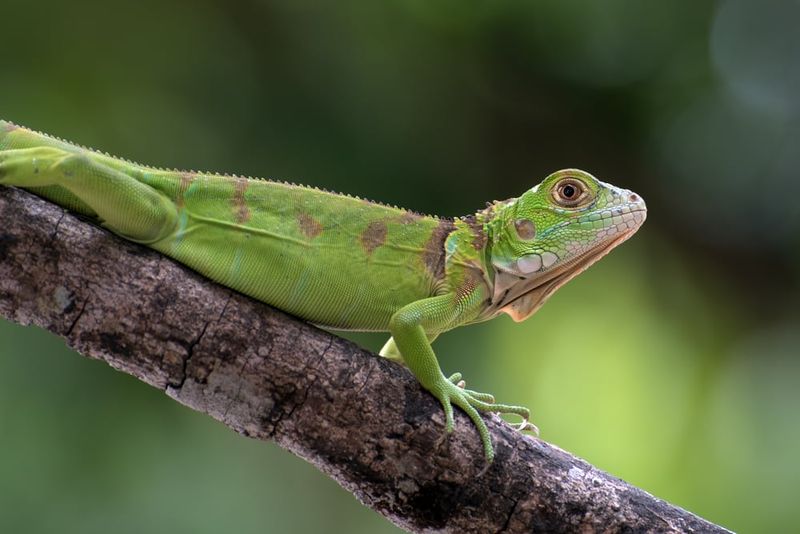
Unlike the Komodo, the Green Iguana exudes a peaceful aura. This leaf-eater thrives in tropical regions, where its gentle demeanor and striking green hue make it a popular pet. Known for their sociable nature, these reptiles often bask in the sun, displaying intricate patterns and vibrant colors. Green Iguanas communicate through head bobs and dewlap movements, making them fascinating to observe. Although they require specific care, including a spacious habitat and a strict diet, they rarely pose a threat to humans, making them an ideal choice for reptile enthusiasts.
Nile Monitor
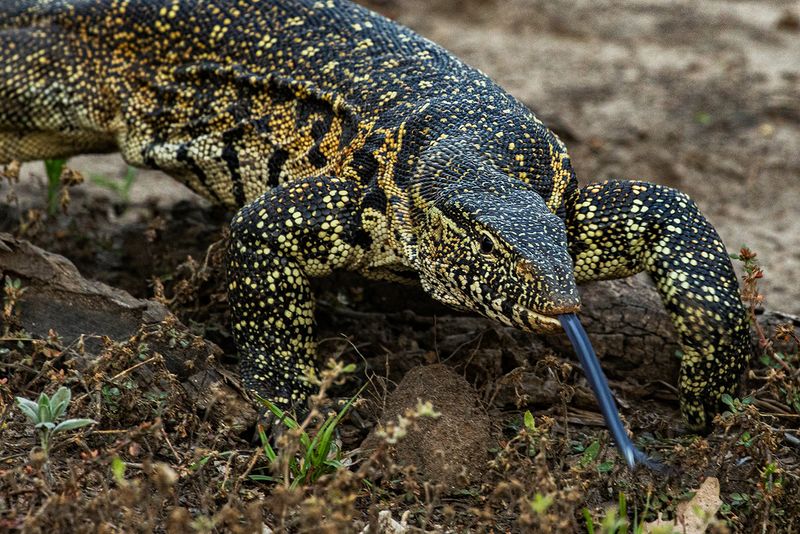
The Nile Monitor, with its sleek body and keen senses, is a master hunter. Found along African waterways, its reputation as a formidable predator is well-earned. It’s known for speed and aggression, often preying on birds, fish, and small mammals. While its intelligence and adaptability are impressive, these traits can lead to unpredictable behavior, especially when cornered. Although they can be tamed with patience, their potent bite and strong claws demand respect and caution. Proper handling and understanding of their nature are essential for those considering them as pets.
Bearded Dragon
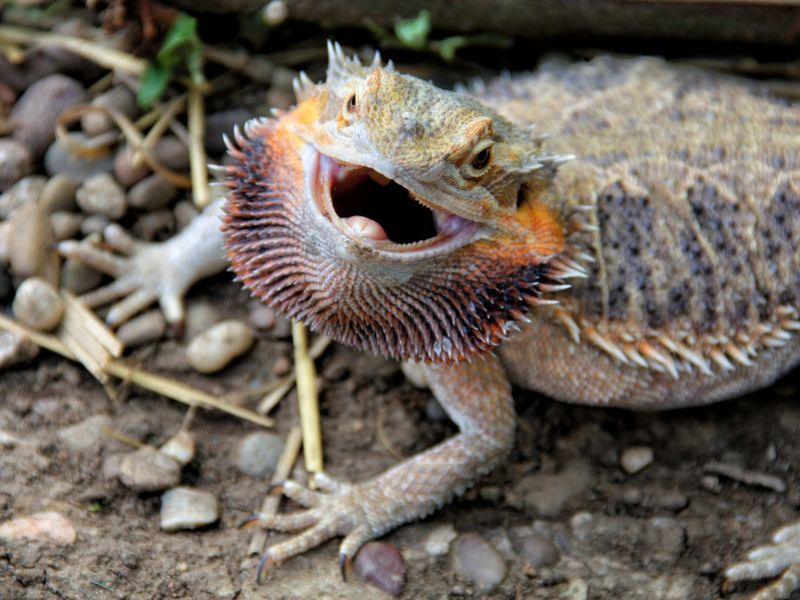
Bearded Dragons are beloved for their inquisitive and gentle nature. Originating from Australia, they enjoy basking under heat lamps, mimicking their natural desert environment. With a docile temperament and a quirky habit of ‘waving’ to express submission, they make excellent companions for reptile enthusiasts. Their diet consists mainly of insects and leafy greens, contributing to their easy care requirements. Bearded Dragons are known for forming bonds with their owners, often enjoying being handled and engaging in playful interactions, making them a delightful choice for families.
Gaboon Viper
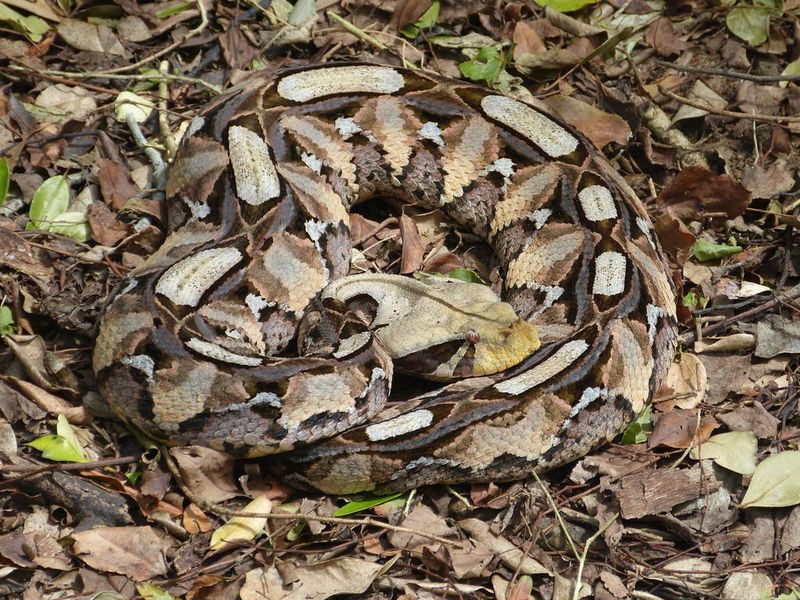
With the longest fangs of any snake, the Gaboon Viper is a master of ambush. Its ability to blend seamlessly into the forest floor makes it a stealthy predator. Found in the rainforests of Central Africa, this snake strikes with remarkable speed and precision. Despite its lethargic appearance, the Gaboon Viper can deliver a potent venomous bite when threatened. However, they are generally placid and will avoid confrontation if possible. Their striking patterns serve as a warning sign, and observing them from a distance is advisable to ensure safety.
Leopard Gecko
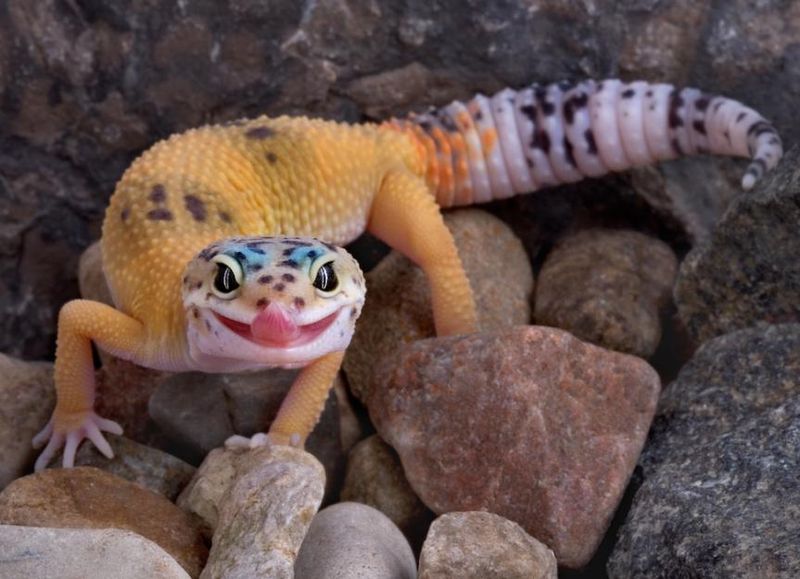
Charming and approachable, the Leopard Gecko is favored among reptile owners. Known for its friendly disposition and unique spotted appearance, it thrives in desert-like enclosures. These small, nocturnal lizards are easy to care for, requiring minimal space and a simple diet of insects. Leopard Geckos are also one of the few lizards able to vocalize, making soft chirps that endear them to owners. Their gentle nature and ease of care make them a perfect choice for beginners and families, ensuring they remain a top choice as a pet.
Black Mamba
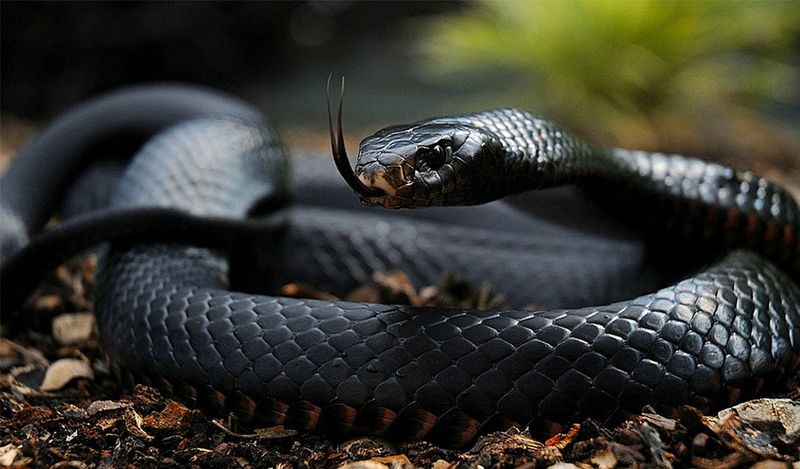
Notorious for its speed and potent venom, the Black Mamba is one of Africa’s most feared snakes. Known to reach speeds of up to 12 mph, it can strike multiple times, delivering a lethal dose of venom. Its name derives from the inky black interior of its mouth, revealed when threatened. While its reputation is fearsome, it’s important to note that Black Mambas avoid humans when possible. However, they will defend themselves aggressively if cornered. These snakes require respect and distance, as their presence signifies a deadly threat.
Corn Snake
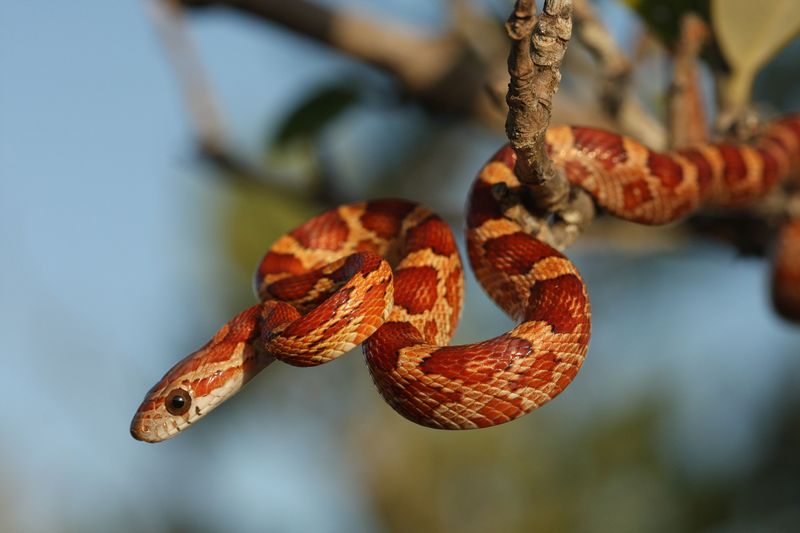
With its striking patterns and gentle demeanor, the Corn Snake is a favorite among snake keepers. Native to North America, these non-venomous snakes boast vibrant color variations, ranging from deep red to bright orange. They are excellent climbers, often found in trees or burrows. Known for their docility, Corn Snakes are easy to handle and require minimal care, thriving on a diet of rodents. Their adaptable nature and attractive appearance make them an ideal choice for beginners, providing a rewarding experience for those new to snake ownership.
King Cobra
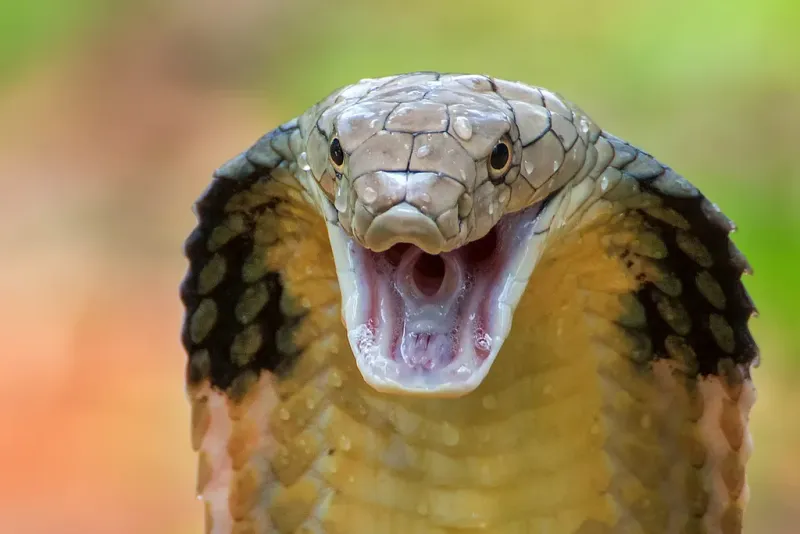
The King Cobra, a symbol of power and majesty, is both revered and feared. As the longest venomous snake, it commands attention with its imposing size and hood display. Found in the forests of Southeast Asia, it hunts primarily other snakes. Despite its fearsome reputation, King Cobras are shy and avoid human contact. However, when threatened, they can deliver a large amount of potent venom. Their intelligence and ability to stand upright make them fascinating yet dangerous creatures. Respect and caution are essential when in their presence.
Ball Python
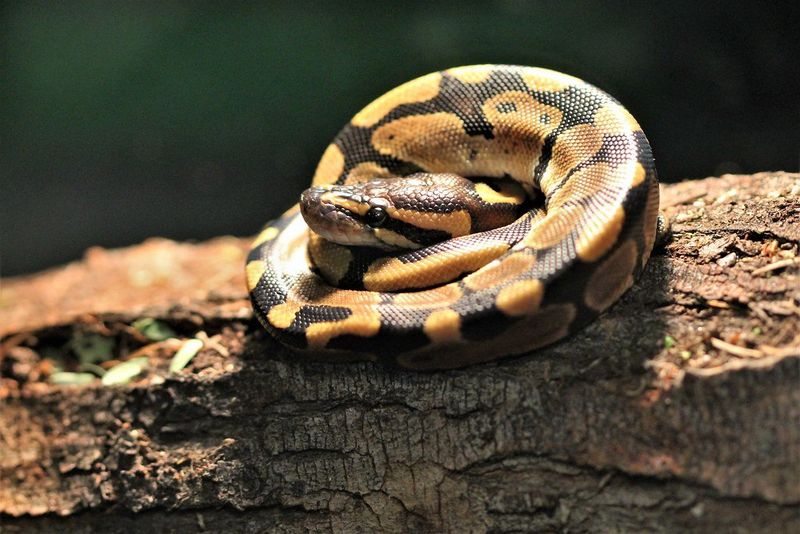
The Ball Python, with its gentle disposition and striking patterns, remains a beloved pet. Originating from West Africa, these snakes are known for their tendency to curl into a ball when stressed or threatened, hence the name. Their manageable size and docile nature make them ideal companions for both novices and veteran keepers. Ball Pythons require a warm environment and a diet of rodents, but their easygoing temperament ensures they adapt well to captivity. Their rarity in displaying aggression further cements their status as a highly recommended pet snake.
Inland Taipan
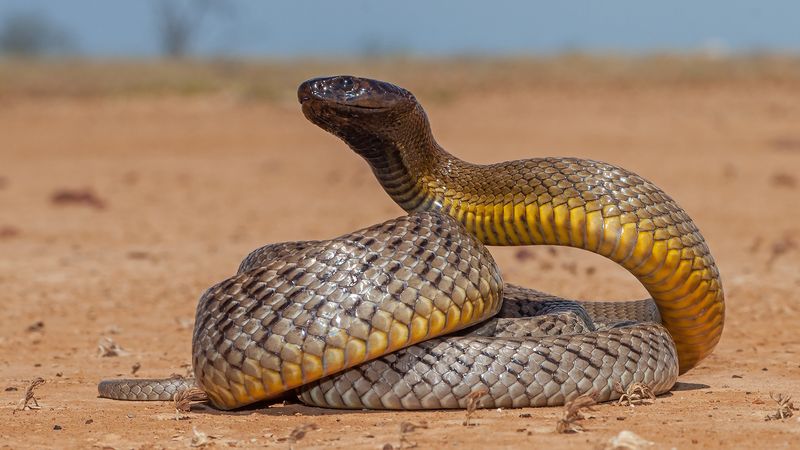
Possessing the most potent venom of any snake, the Inland Taipan is a creature of extremes. Native to Australia’s arid regions, its venom can incapacitate prey swiftly. Thankfully, these snakes are elusive and rarely encountered by humans. When threatened, they deliver accurate and rapid strikes, but their reclusive nature means bites are infrequent. Despite its deadly capabilities, the Inland Taipan is not aggressive and prefers flight over fight. Observing from a distance is the best practice, respecting the power it holds while appreciating its ecological role.
Red-Eared Slider
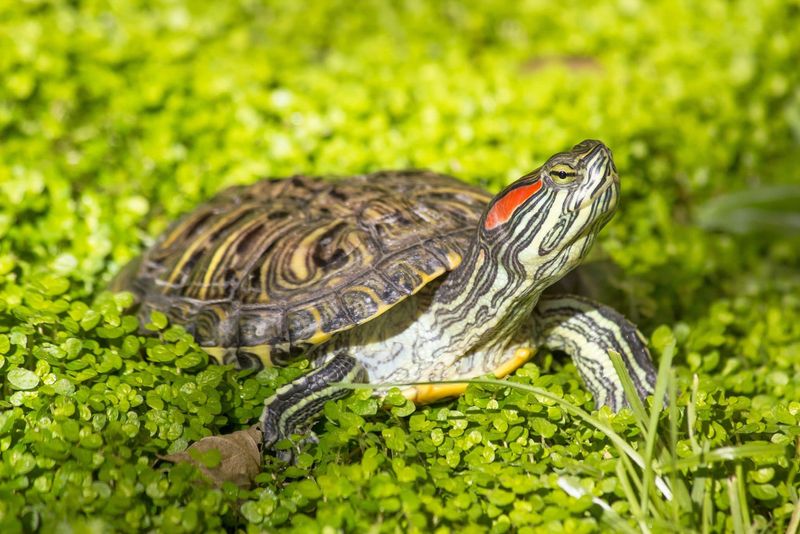
Red-Eared Sliders are charming aquatic turtles known for their distinctive red head markings. Popular as pets, they adapt well to captivity, thriving in well-maintained aquariums. Their playful swimming and basking behaviors provide endless enjoyment for owners. With a diet that includes aquatic plants and insects, they require specific care but are generally low-maintenance. Red-Eared Sliders are social creatures, often seen sunbathing in groups. Their friendly demeanor and captivating antics make them a safe and enjoyable choice for turtle enthusiasts of all ages.
Copperhead Snake
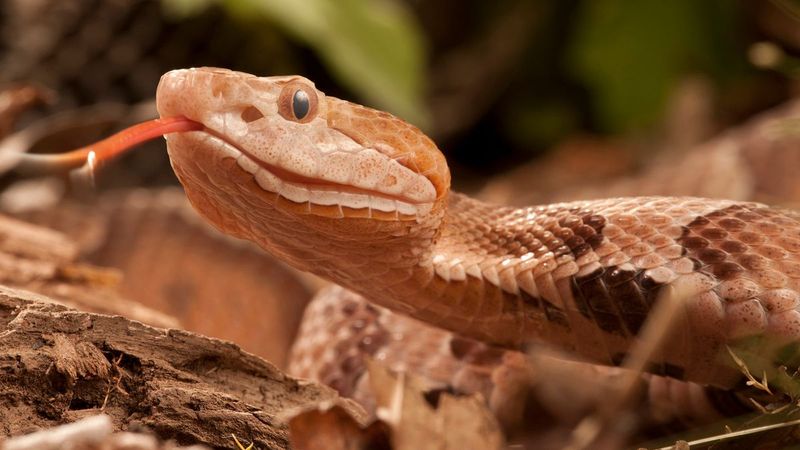
With its coppery head and hourglass-patterned body, the Copperhead Snake is a master of camouflage. Found in the woodlands of North America, it often goes unnoticed by humans. Though its venom is relatively mild compared to other venomous snakes, it can still cause significant pain and injury. Copperheads rely on their stealth to ambush prey, but they prefer to avoid confrontation. Their tendency to freeze when threatened can lead to accidental encounters. Caution is advised when traversing their habitats, keeping an eye out for these cryptic serpents.
Blue-Tongued Skink
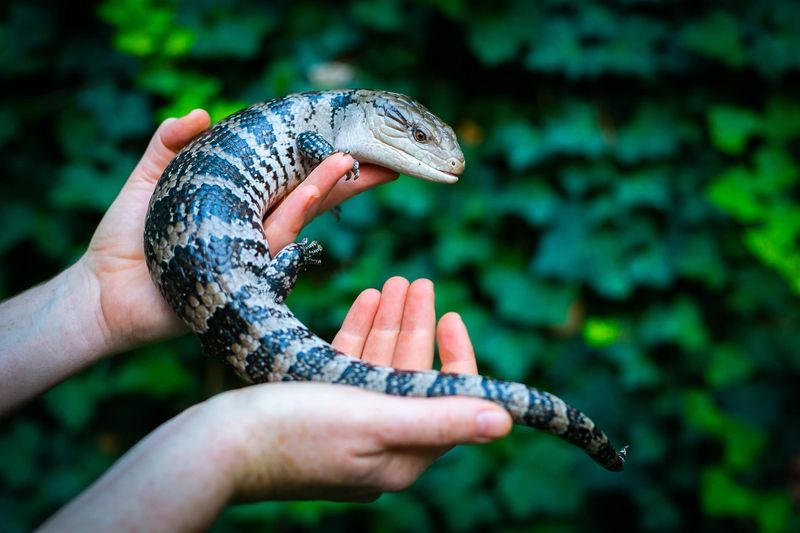
The Blue-Tongued Skink, with its vibrant tongue and gentle demeanor, captivates reptile lovers. Native to Australia, these lizards are known for their curious and calm nature. They enjoy basking under heat lamps and actively exploring their surroundings. Blue-Tongued Skinks are omnivores, enjoying a varied diet of fruits, vegetables, and insects. Their quirky blue tongue serves as both a defense mechanism and a unique feature that delights owners. Their manageable size and friendly nature make them a popular choice among families seeking a personable reptile companion.
Gila Monster
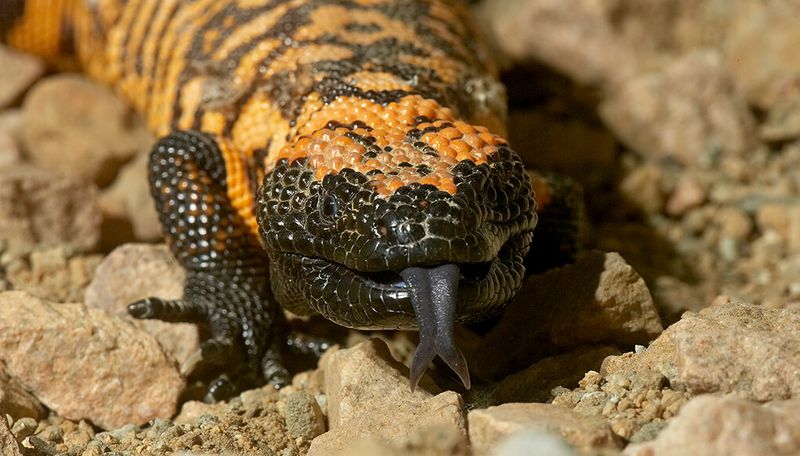
With bead-like scales and vibrant patterns, the Gila Monster is as fascinating as it is formidable. Found in the deserts of the Southwestern United States, it is one of few venomous lizards. Its slow movement belies a potent bite, used to subdue prey. Though not aggressive, Gila Monsters are defensive when threatened, making handling risky. Their unique coloration serves as a warning to potential predators. Despite their fearsome reputation, they play a crucial role in their ecosystem. Observing these reptiles from afar ensures safety while appreciating their beauty.
Russian Tortoise

The Russian Tortoise, with its hardy nature and gentle demeanor, is a delight for turtle enthusiasts. Native to the arid regions of Central Asia, it thrives in well-drained, sunny enclosures. This small tortoise enjoys a diet rich in leafy greens and flowers, requiring minimal care beyond a warm environment. Known for their long lifespan and endearing personalities, Russian Tortoises become cherished companions, often forming bonds with their owners. Their manageable size and docile nature make them an ideal choice for those seeking a low-maintenance reptile pet.
Burmese Python
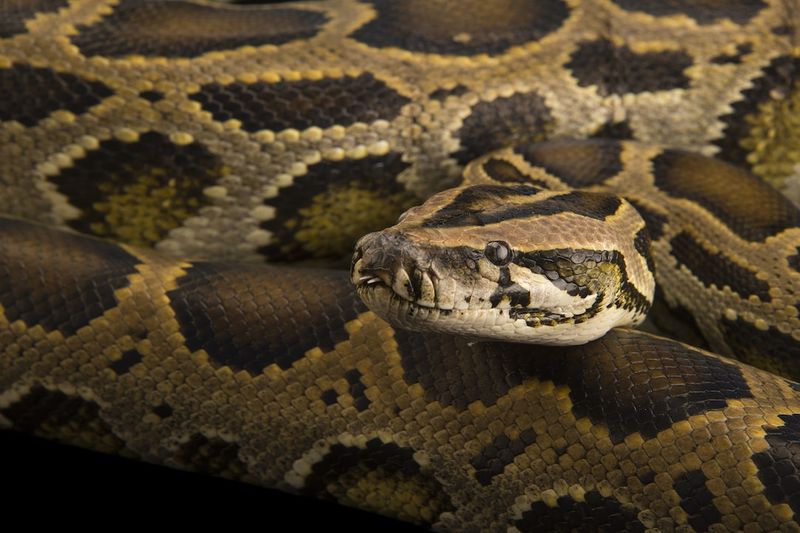
The Burmese Python, with its immense size and strength, is awe-inspiring yet potentially dangerous. Native to Southeast Asia, these constrictors can grow over 20 feet long. Known for their docile nature in captivity, they can become aggressive if mishandled or stressed. Their powerful constriction is used to subdue prey, making them formidable hunters. While many enjoy keeping Burmese Pythons as pets, their size and strength require experienced handlers and spacious enclosures. Caution is essential when interacting with these giants, respecting their capabilities and needs.
African Spurred Tortoise
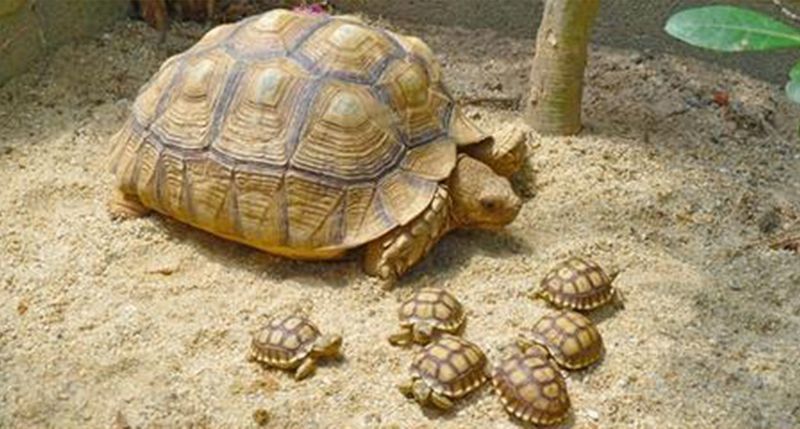
The African Spurred Tortoise, also known as the Sulcata Tortoise, is a gentle giant of the tortoise world. Native to the Sahara Desert, it is one of the largest tortoise species, known for its robust shell and amicable nature. These tortoises thrive in warm, dry environments and enjoy a diet of grasses and vegetables. Their easygoing nature and adaptability make them popular as pets, but their size demands a large, secure outdoor space. The African Spurred Tortoise’s friendly disposition ensures they bring joy and fascination to their keepers.
Green Anaconda
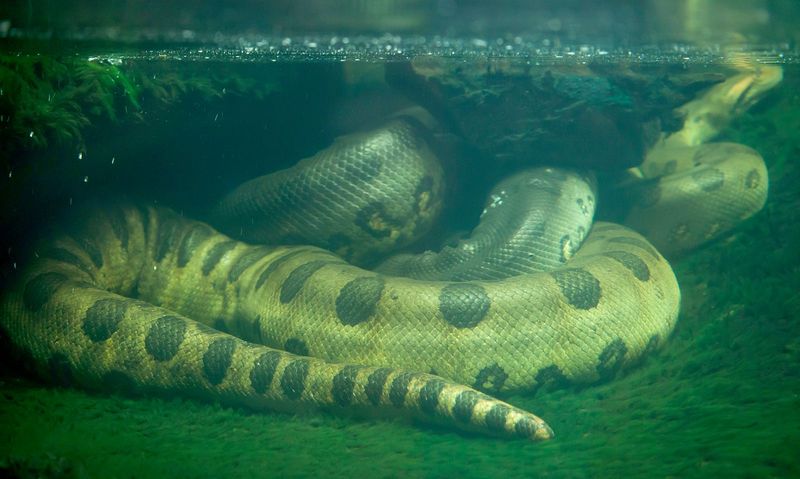
The Green Anaconda, with its massive size and aquatic prowess, is both captivating and formidable. Found in the swamps and rivers of South America, it is the heaviest snake species. Known for its strength, the Anaconda can constrict large prey, including deer and caimans. While not venomous, its immense power makes it a dangerous predator. Despite its intimidating reputation, it usually avoids humans, preferring to remain hidden in water. Observing these magnificent snakes in their natural habitat requires respect for their strength and a cautious approach to ensure safety.
Crested Gecko
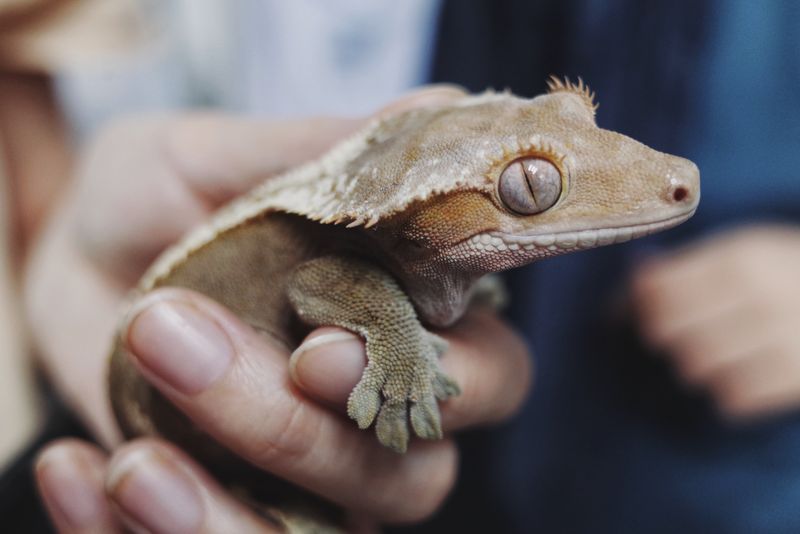
Crested Geckos, with their expressive eyes and fringed appearance, are adored by reptile enthusiasts. Originally from New Caledonia, they were once thought extinct, only to be rediscovered. Known for their climbing abilities and lively nature, they thrive in humid environments with plenty of plant cover. Crested Geckos are easy to care for, feeding on a simple diet of fruit puree and insects. Their gentle nature and unique appearance make them a perfect choice for both novice and experienced keepers, adding a touch of the exotic to any home.

